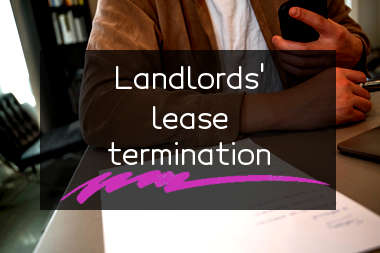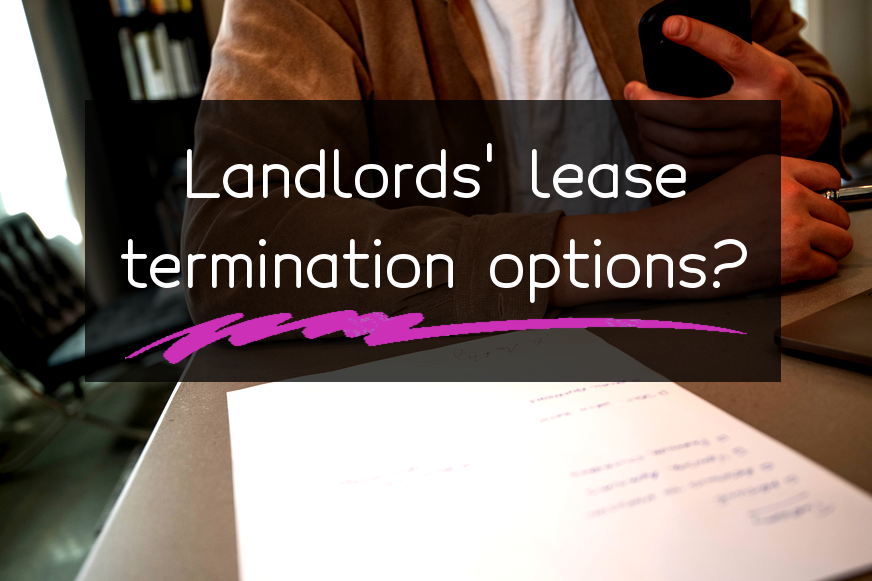Landlords breaking a lease agreement means that they violate the terms and conditions of the lease agreement that they have signed with their tenants. This can happen in several ways, including:
- 1. Failure to maintain the property: Landlords are obliged to provide a habitable and safe living space for their tenants. If they neglect their responsibilities, such as repairing appliances or fixing plumbing issues, they are in breach of the lease agreement.
- 2. Violating privacy rights: Landlords must give their tenants appropriate notice before entering the rental property and must only do so for legally sanctioned reasons. Failure to obtain tenants' consent or entering the property without permission would be a breach of the lease agreement.
- 3. Wrongful eviction: Landlords cannot force a tenant to leave the property without following the proper legal eviction process. If they do, it would constitute a breach of the lease agreement.
- 4. Rent increases: If landlords raise the rent outside of what was agreed upon in the lease agreement and without providing proper notice, they would be breaking the lease agreement.
- 5. Altering the terms of the lease agreement: Without mutual agreement and consultation with the tenant, a landlord cannot alter the terms of the lease agreement. Such actions would violate the lease agreement.
Breaking a lease agreement can cause significant negative consequences for the landlord, including being sued by the tenant or receiving penalties for the violation.
Month-to-Month vs. Term Leases
A month-to-month lease is a rental agreement that allows the tenant and the landlord to renew the lease on a monthly basis. In other words, both parties can decide to continue the lease for another month or terminate it with a 30-day notice period. This type of lease is flexible in nature and provides renters with the freedom to stay in a rental unit for as long as they want, without having to commit to a long-term lease.
On the other hand, a term lease is an agreement between the landlord and the tenant for a fixed period of time. This type of lease is typically for six months, one year, or sometimes longer. The terms of the lease are non-negotiable, so if either party wants to terminate the agreement before the end of the lease term, they may have to pay penalties or forfeit their security deposit.
In summary, month-to-month leases are flexible, while term leases are long-term and have less flexibility but offer the security of a set lease duration. The choice between month-to-month and term leases depends on the tenant's lifestyle and preferences, as well as the landlord's rental business goals.
Early Lease Termination Clauses
An early lease termination clause is a provision in a lease agreement that allows the tenant or the landlord to end the lease before the expiration date. The clause typically outlines the conditions under which either party may terminate the lease early and what fees or penalties may be incurred.
For tenants, an early termination clause can provide more flexibility in the event of an unexpected job loss, family emergency, or other unforeseen circumstances. The tenant may be required to provide notice and pay a certain amount of rent or a penalty fee for breaking the lease early.
For landlords, an early termination clause can provide a way to protect their rental income and property in case the tenant fails to meet their obligations under the lease agreement. The landlord may include a clause that allows them to terminate the lease if the tenant violates certain terms such as non-payment of rent, property damage, or illegal activities on the rental premises.
Overall, an early lease termination clause can benefit both tenants and landlords by providing more clarity and protection in case of unexpected situations or disputes. It is essential for both parties to carefully review the terms of the lease agreement and understand their rights and responsibilities before signing.
Sale of the Property
The sale of a property refers to the process of transferring ownership of a piece of real estate from one party to another in exchange for an agreed upon sum of money. The sale process typically involves several steps, including listing the property for sale, marketing the property to potential buyers, negotiating a sale price and terms, conducting inspections and appraisals, securing financing, and completing the necessary legal and administrative paperwork to transfer ownership. The sale of a property can be initiated by a homeowner looking to sell their residence, a real estate developer looking to sell a commercial or residential building, or an investor looking to sell a piece of land. The sale of a property can be a complex and involved process, and it is often advisable to work with a skilled real estate agent or professional to help ensure that the process is handled smoothly and efficiently.
Renovations & Repairs
Renovations and repairs are activities that involve improving or upgrading a property or asset. Renovations refer to the process of making significant changes or improvements to a building, structure, or property. This may include additions, remodels, or upgrades to mechanical, electrical, plumbing, and other systems, as well as cosmetic improvements such as painting and flooring.
Repairs, on the other hand, refer to the process of fixing or restoring a property or asset to its original condition. This may involve fixing or replacing damaged or broken structures, systems, or components, such as windows, doors, roofs, HVAC systems, and plumbing.
Both renovations and repairs are important for ensuring the safety, functionality, and value of a property. Renovations can also increase the aesthetic appeal and marketability of a property, while repairs can prevent further damage and prolong the life of the property or asset.
Landlord Move-In
Landlord move-in refers to the process of a landlord or property owner moving into one of their rental properties. This often happens when the landlord owns multiple properties or when they have decided to move into one of their rental units for personal reasons.
The landlord move-in process typically involves the following steps:
- 1Giving proper notice to the current tenant that the landlord will be moving in.
- 2Preparing the rental unit for the landlord's move, which may involve repairs, cleaning, and decorating the unit.
- 3Moving the landlord's personal belongings into the unit.
- 4Completing any final paperwork or documentation related to the move.
During the landlord move-in process, the tenant may be required to vacate the rental unit or may be given the option to terminate their lease early without penalty. The landlord may also be required to provide the tenant with compensation for any inconvenience caused by the move.
Just one more thing: if you liked the article, please like us on social media and share this article with friends.



